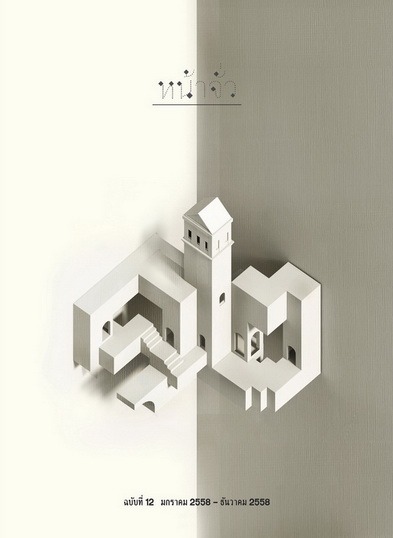คฤหาสน์นัตตุโกตไตเศรษฐี ทมิฬนาฑู อินเดีย/Palatial Houses of the Nattukottai Chettiars in Tamil Nadu, India
Main Article Content
Abstract
บทคัดย่อ
คำว่า เศรษฐี ภาษาสันสกฤตมาจากรากศัพท์ เศรษฐะ ที่แปลว่า ดีเลิศ และเป็นที่มาของคำว่า เฉตเตีย หรือ เฉตตี หรือ เสตตี ที่เป็นชื่อตำแหน่งพ่อค้า ใช้โดยคนหลายกลุ่มในประเทศอินเดีย บทความนี้เน้นที่สถาปัตยกรรมคฤหาสน์ของนัตตุโกตไตเฉตเตีย หรือนัตตุโกตไตเศรษฐี (เศรษฐีผู้สร้างเรือนเป็นคฤหาสน์) ที่เรียกตัวเองว่า ชาวนคร (คนเมือง) ตั้งถิ่นฐานอยู่ที่แคว้นปุทุกโกตไตและศิวคงคา รัฐทมิฬนาฑู ประเทศอินเดีย ในช่วงคริสต์ศตวรรษ ที่ 19-20 นัตตุโกตไตเฉตเตียทำการค้าและการธนาคารในศรีลังกาและหลายประเทศในเอเชียตะวันออกเฉียงใต้ เช่น พม่า มาเลเซีย สิงคโปร์ อินโดนีเซีย และเวียดนาม จากความมั่งคั่งทางการค้าและการธนาคารในศรีลังกาและเอเชียอาคเนย์ นัตตุโกตไตเฉตเตียส่งเงินกลับประเทศอินเดียเพื่อการลงทุนอุตสาหกรรมและการบริจาคเพื่อสาธารณประโยชน์ รวมทั้งสร้างชุมชนที่มี การวางผังอย่างดี และสร้างที่อยู่อาศัยใหญ่โตเป็นคฤหาสน์ที่บ้านเกิดในแคว้นทมิฬนาฑู ผังของชุมชนนัตตุโกตไตเฉตเตียมีลักษณะเป็นตารางรูปสี่เหลี่ยมที่มีระบบการจัดการน้ำเพื่อการเกษตร อุปโภค และบริโภค วัสดุที่ใช้ในการสร้างคฤหาสน์นำเข้าจากต่างประเทศ เช่น ไม้สักจากพม่า ไม้ซาตินจากศรีลังกา หินอ่อนและกระจกเงาจากอิตาลี กระเบื้องเซรามิคจากญี่ปุ่น และเหล็กหล่อจากอังกฤษ คฤหาสน์ของนัตตุโกตไตเฉตเตียมีลักษณะร่วมกับเรือนพื้นถิ่นทมิฬนาฑู และลักษณะเฉพาะของนัตตุโกตไตเฉตเตียที่แยกทางเข้าของชายและหญิง
Abstract
The term “shresthi” had original root from Sanskrit “shresta” meaning superior and was a source of the term “chettiar,” or “chetty,” or “settee.” Chettiar was the name title of a trading group of many ethnic communities in India. This paper focuses on the architecture of palatial houses of Nattukottai Chettiars or Nattukottai Shresthis or Nagarathars (town people) in Pudukkottai and Sivaganga districts, Tamil Nadu, India. During the 19-20 centuries, Nattukottai Chettiars were involved in trade and banking business in Sri Lanka and countries in Southeast Asia, such as Burma, Malaysia, Singapore, Indonesia, and Vietnam. Being wealthy from trade, they sent money back home in India for industrial investment and philanthropy as well as establishing well organized villages and palatial houses in Tamil Nadu. Their village layout was arranged in a grid pattern with irrigation system and ponds supplying water for drinking and domestic uses. Their architectural materials used to build palatial houses were imported from abroad ; for example teak from Burma, satin wood from Ceylon ; marble and mirror from Italy, ceramic tiles from Japan ; and steel from England. Chettiar palatial houses mixed indigenous traditional houses in Tamil Nadu as well as chettiars’ characteristic of separate entrances for male and female.


